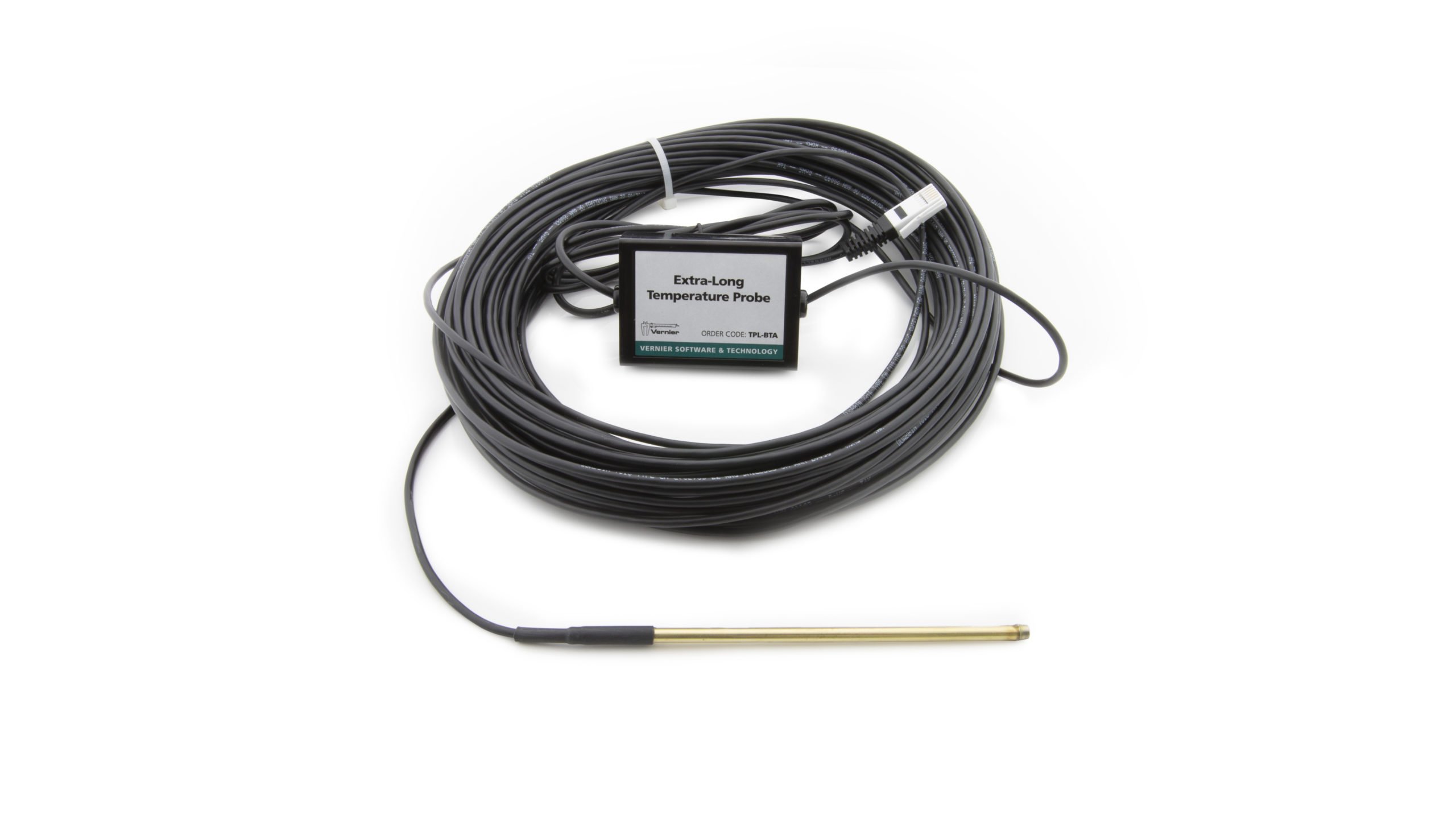Troubleshooting
Primary Test: Connect the Extra-Long Temperature Probe and run the data-collection program. Hold the tip of the sensor in your hand and check for the temperature readings to change.
Note: The probe can be used in any of the following chemicals for several minutes at a time:
- acetone
- cyclohexane
- ethanol
- ethylene glycol (antifreeze)
- glacial acetic acid
- household bleach
- isopropyl alcohol
- lauric acid
- naphthalene
- paradichlorobenzene
- salt water
- sodium hydroxide (2M)
- sulfuric acid (3M)
- vinegar
- water
Additional Troubleshooting
- Can I use Vernier water quality sensors in salt water or in a salt water aquarium?
- Which Vernier sensors are submersible in water?
- What do I need to do to prepare for outdoor data collection?
- Why does my temperature sensor read a value that does not change and is very high/low?
Specifications
- Range: –50 ºC to 150 ºC
- Typical Accuracy: ±1.0 ºC at 25 ºC
- Typical Resolution: 0.07 ºC
- Power: 7.4 mA @ 5 VDC
- Response Time (from 25 ºC to 100 ºC in water): 60 seconds
- Maximum temperature the sensor can tolerate without damage: 200 ºC
- Stored calibration coefficients
⚬ Celsius: Slope = 58.341 ºC/V; Intercept = –53.073 ºC
⚬ Fahrenheit: Slope = 105.1 ºF/V; Intercept = –63.531 ºF
Calibration
Calibrate? No. You should not have to perform a new calibration when using the Extra-Long Temperature Probe in the classroom. The sensor is custom calibrated before shipping it.
If you wish to calibrate the sensor, you can conduct a two-point calibration. For more information on calibration, see How do I calibrate my sensor?
Related Products
- Water Depth Sampler (
WDS ) - Stainless Steel Temperature Probe (
TMP-BTA ) - Surface Temperature Sensor (
STS-BTA ) - Go!Temp (
GO-TEMP ) - EasyTemp (
EZ-TMP ) - Thermocouple (
TCA-BTA ) - Wide-Range Temperature Probe (
WRT-BTA ) - Go Direct® Temperature Probe (
GDX-TMP )

